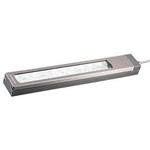
Lighting is an essential component of all airplanes. From cabin and cockpit lights to navigation lights, taxi lights and even headlights, they play a key role in visibility. Rather than only using incandescent lights, however, many airplanes now use light-emitting diode (LED) lights. Below are six facts about LED lighting.
#1) Semiconductor Devices
LEDs are classified as semiconductor devices. They work by emitting light in the form of photos as electricity flows through them. A process known as electroluminescence, it involves the electrons within the semiconductor material recombining with the electron holes.
#2) Variety of Colors
LEDs are available in a variety of colors. Some of them consist of warm colors like red, orange and yellow. Other LEDs consist of cool colors light blue or green. The specific type of semiconductor material used in the construction of an LED will determine the LED’s color. Different materials produce photons at different wavelengths, thereby allowing for different colors.
#3) 90% More Efficient Than Incandescent Lighting
One of the reasons why LEDs have become so popular in recent years is because they are energy efficient. A typical LED bulb is about 90% more efficient than an incandescent bulb. As a result, LEDs have a lower operating cost, which saves money and promotes Eco-friendliness.
#4) Available In Very Small Sizes
Another reason for the rise of LEDs is their size. While incandescent bulbs are limited to “normal” sizes, LEDs can be produced in very small sizes. Some of them measure just 2 millimeters. Their small size allows them to be mounted on printed circuit boards, which isn’t possible with traditional incandescent bulbs.
#5) Long-Lasting
LEDs are long-lasting. They often last up to 25 times longer than traditional incandescent bulbs. A typical LED bulb has a lifespan of about 25,000 hours, whereas an incandescent bulb lasts around 1,000 hours. LEDs don’t burn out like traditional incandescent bulbs, so they last much longer.
#6) Shock-Resistant
A benefit of LEDs that many people overlook is shock resistance. They are better protected against damage from external shock than other types of bulbs, such as incandescent. Incandescent bulbs have a fragile filament. When exposed to external shock, this filament may crack or otherwise break, at which point the incandescent bulb will stop working. LEDs don’t have a wire filament such as this, so they are more durable and resistant to shock. This makes LEDs particularly useful for airplanes.



